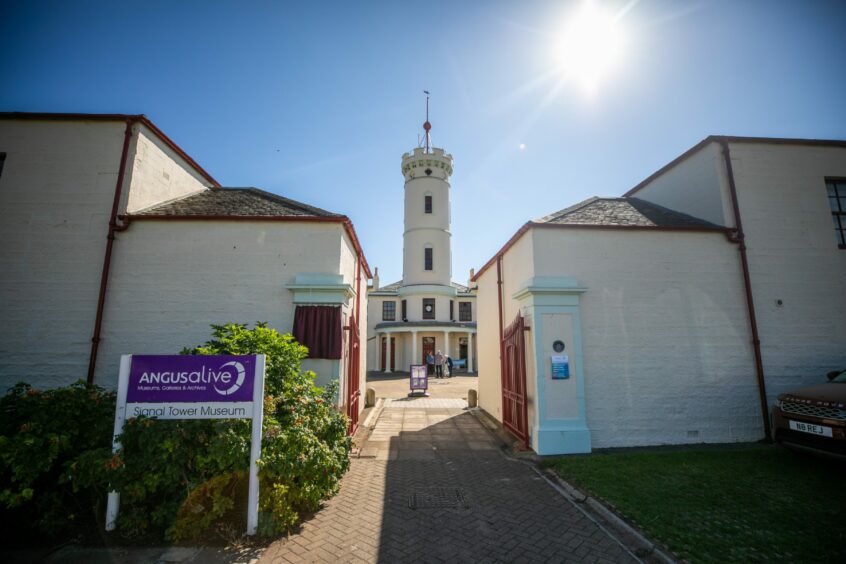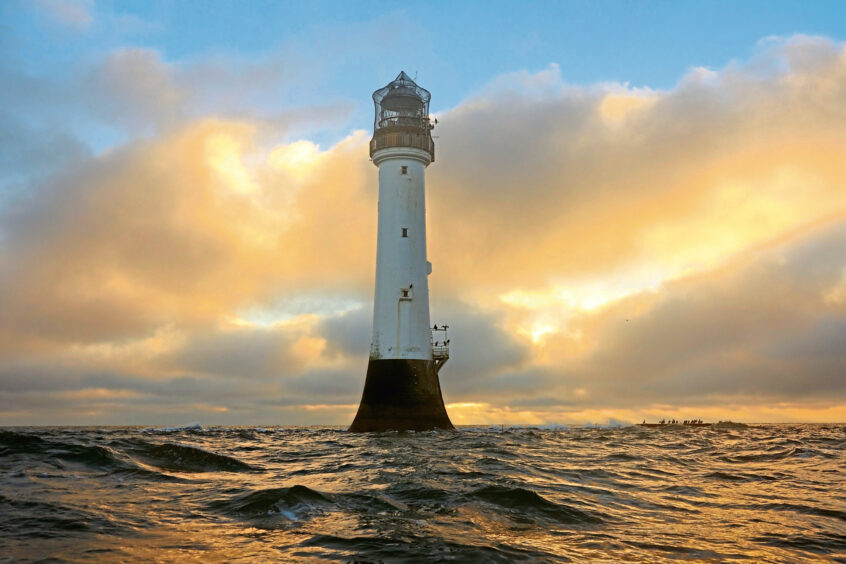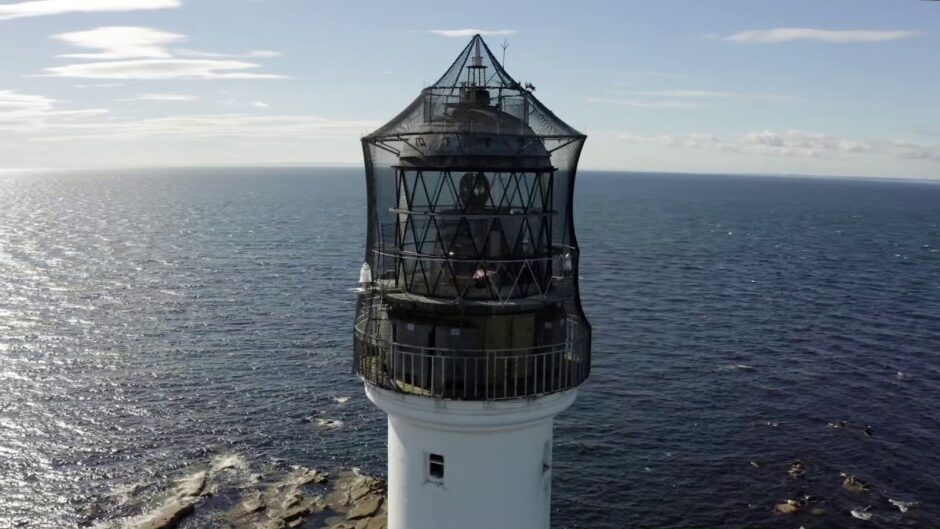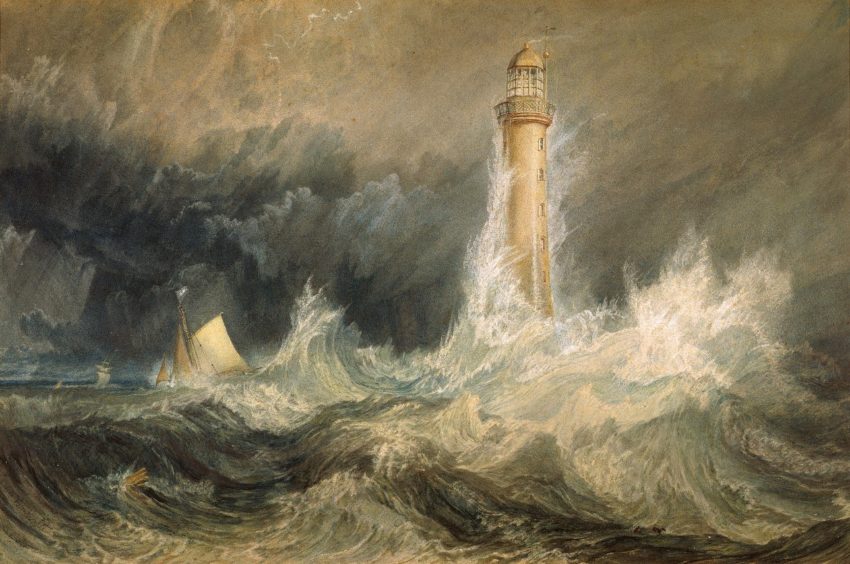The Bell Rock’s last keeper has been given the honour of unveiling a Red Wheel recognising the world-leading significance of the lighthouse off the Angus coast.
John Boath was the light’s last principal keeper until 1988.
His retirement signalled the switch to full automation for the famous light.
But the Bell Rock remains the world’s oldest surviving sea-washed lighthouse.
It stands 11 miles off the coast of Arbroath.
Completed in 1810, it is regarded as one of the wonders of the industrial world.
So its importance has been marked by a National Transport Trust plaque now installed on the Signal Tower which once served as the beacon’s shore station.
The Red Wheel
In the same way blue plaques celebrate links to famous people, Red Wheels mark historically important transport sites.
National Transport Trust vice-chairman Jerry Swift said: “This is a Red Wheel that’s been in the making for quite a while.
“Red Wheels exist to mark points of real transport innovation.
“Scotland has some marvellous civil engineers and this particular lighthouse design is an example of two of these engineers’ work.
“National Transport Trust exists in part to try and encourage younger people into science and technology, to make it exciting and help them to understand that what we do today will have a bearing in 150 to 200 years’ time.”
The Bell Rock’s signal tower is now an Angus Alive museum.
Museums lead Rachel Jackson said: “We are delighted the Bell Rock lighthouse has been recognised by the National Transport Trust for its contribution to our maritime heritage and pleased the Red Wheel has been located at Signal Tower Museum which now tells visitors about the history of the lighthouse.”
The Red Wheel unveiling came on the eve of a fire drama at the light 35 years ago.
Three men were trapped on the rock in raging seas after a fire broke out in the lighthouse.
They were winched to safety by a Wessex helicopter from the former RAF Leuchars.
History of the light
The remarkable feat of engineering launched the legendary Stevenson dynasty.
Through four generations it built lighthouses around Britain’s northern coasts.
But Bell Rock designer Robert’s grandson Robert Louis sailed a different course and found literary immortality as the author of Treasure Island.
At 115 feet tall, the Bell Rock light is visible from 35 miles.
It was built on the treacherous Inchcape reef.
By the turn of the 19th century it would claim six ships during a typical winter.
Legend has it the name came from the Abbot of Arbroath placing a bell there to warn seafarers of the danger.
In 1799, the Masters of Trinity House in Leith decided to build a light and commissioned Robert Stevenson to devise a design.
But it was shelved due to concerns over cost, the radical nature of the proposal and Stevenson’s perceived youth.
The plan resurfaced after the warship HMS York was wrecked on the rock in 1804 with the loss of all hands.
Stevenson sent his design to renowned engineer John Rennie who approved the plan and cost estimate
Legislation was passed in 1806 approving the project.
And construction began, with 60 workmen housed in a temporary beacon alongside.
Robert Stevenson became resident engineer reporting in an often-stormy relationship to Rennie, who was prone to seasickness so happy to delegate on-site responsibilities to the younger man.
The standard of work has stood the test of time, with no replacement or adaptations on more than 200 years.
It remains a popular destination for day trips out of Arbroath harbour.
And in 1819, renowned British artist J M W Turner painted a watercolour of the lighthouse which now hangs in the National Gallery of Scotland.







Conversation